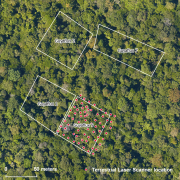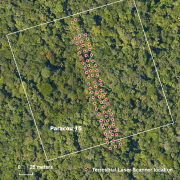Environmental monitoring facilities
Type of resources
Available actions
Topics
Keywords
Contact for the resource
Provided by
Years
Formats
Representation types
Update frequencies
status
Scale
Resolution
-
Shom is the national referent for the level of the sea in situ on all areas under French jurisdiction. In this capacity, he assures under the acronym REFMAR different coordination functions in the collection and dissemination of public data related to water level observations, in order to promote their use in multiple applications within the framework of international recommendations.
-
Shom manages a network of permanent digital coastal tide-gauges on French coasts: the RONIM Sea Level Observation Network. Most tide-gauge observatories are partnered with one or more local partners.<br /><br /> Four main types of data are available for download:<br /> - “Raw high frequency" data: raw observations neither validated nor evaluated, obtained directly from the sensor. 1-minute measurement; integration time 15 seconds (on the minute); sampling period: 1 second.<br /><br /> - "Raw non-real time" data: raw observations neither validated nor evaluated, obtained directly from the sensor. 10-minute measurement; integration time 121 seconds (around every 10 minutes); sampling period: 1 second.<br /><br /> - "Validated non-real time" data: observations checked and validated by Shom from the "Raw non-real time" data. 10-minute measurement; integration time 121 seconds (around every 10 minutes); sampling period: 1 second.<br /><br /> - "Validated hourly" data: observations checked and validated by Shom, generated from "Validated non-real time" data. Hourly measurement obtained from the Vondrak filter with triangular weighting. The hourly height cannot be calculated in the event of an observation gap greater than 1.5 hours.
-

Environmental DNA metabarcoding has recently emerged as a non destructive alternative to traditional sampling for characterising species assemblages. We here provide a consistent dataset synthetizing all eDNA sampling sites in French Guiana to date. We also provide a taxon by site matrix for fishes presence / absence as inferred from eDNA. Our aim is to allow a transparent communication to the stakeholders, and provide the foundation for a monitoring program based on eDNA.
-

The terrestrial laser scanning (TLS) dataset covers the Guyaflux plot 9 of the experimental station Paracou in French Guiana.
-

The terrestrial laser scanning (TLS) dataset covers Guyaflux plots 1 and 9 at the experimental station Paracou in French Guiana.
-

The terrestrial laser scanning (TLS) dataset covers a transect in plot 15 at the experimental station Paracou in French Guiana.
-
The UMR EcoFoG possesses an herbarium reference collection based on samples harvested all along the different forest plots studied by our teams. This collection is maintained by a botanist and stored on the Agronomical Campus of Kourou, INRA building. A Excel database is linked to this collection and the taxa found in it are listed in the Guyafor database. The collection gathers more than 3000 samples representing 74 families, 288 genera and more than 800 taxa.
-

The “Herbier IRD de Guyane” (CAY) was established in 1965 by R.A.A. Oldeman and harbors nearly 200000 specimens, mostly from French Guiana and nearby countries Suriname, Guyana, Brazil (particularly the state of Amapá), and Venezuela (state of Amazonas). The dataset presented here is the fruit of 30-years’ work by CAY’s staff as well as that of numerous other botanists who have helped make CAY a key scientific platform and leading center of botanical research for the Guiana Shield.
-
Inventories of insects in French Guiana, mainly ants, spiders, Lepidoptera in order to study the biodiversity and distribution of terrestrial arthropods in French Guiana. 11 sites all over French Guiana are represented, 13 focal groups and more than 2600 taxa are represented. The ArthroEcoFoG database gathers more than 27000 specimens in 2016.
-

Guyafor is a network of permanent forest plots installed in French Guiana. The site of Régina St Georges covers a 14ha area. It is composed of one plot managed by ONF. 8587 trees are being followed since 2003. 5 campaignes of inventories have been made in 2003, 2005, 2007, 2008, 2009.
 Guyane-SIG
Guyane-SIG